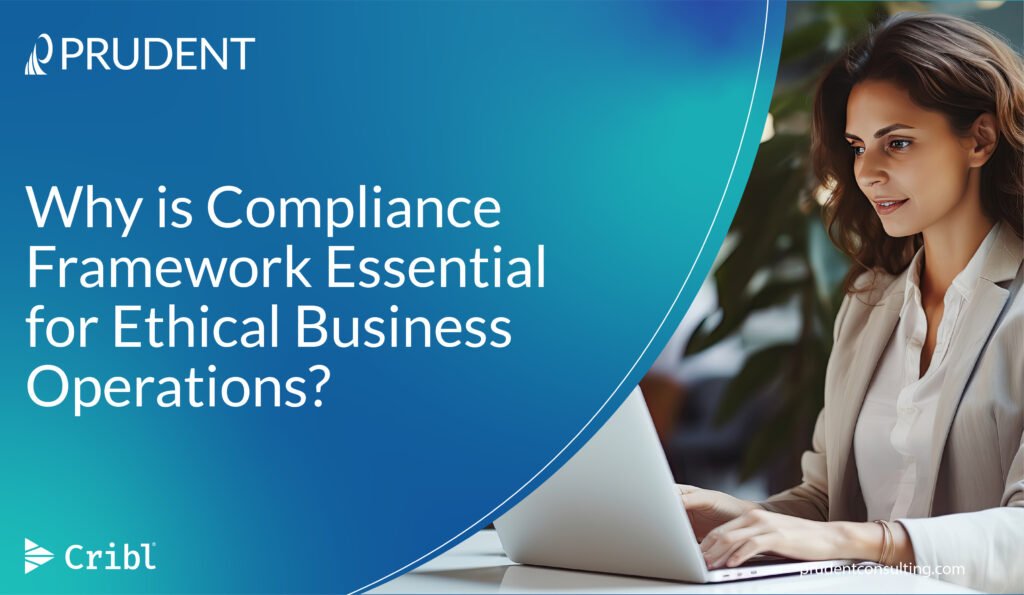Introduction
Compliance frameworks are indispensable for organizations striving to maintain legal and ethical integrity. By establishing structured guidelines and controls, these frameworks help companies navigate complex regulatory landscapes while fostering transparency and trust. In this context, understanding the benefits of compliance frameworks becomes paramount for businesses seeking to mitigate risks and optimize their operational efficiency.
What constitutes a compliance framework?
A Compliance Framework is a systematic strategy delineating companies’ policies, procedures, and controls to ensure adherence to legal and ethical norms as mandated by laws or industry standards. Serving as a roadmap, it facilitates compliance with regulations, aids in risk management, and fosters transparency in business practices.
Essential Components of a Compliance Framework
A compliance framework comprises various interrelated elements to ensure organizational adherence to regulations and standards. It provides both guidance for the organization and a benchmark for regulatory bodies. It promotes ethical practices and minimizes organizational risks when effectively integrated and implemented. These elements must be tailored to the company’s industry, size, and operations. There are five major components of a compliance framework:
1. Policies: Guidelines outlining acceptable behavior within the organization regarding the relevant subject matter. Compliance policies are the cornerstone of a practical compliance framework, addressing regulations, industry standards, potential risks, and ethical conduct for all stakeholders.
2. Procedures: Employees must follow step-by-step instructions to comply with laws, regulations, and industry standards. These procedures ensure that all employees understand how to adhere to the company’s policies and expectations.
3. Controls: Mechanisms implemented within the framework to monitor and enforce compliance. Examples include audits, risk assessments, and employee training programs. Controls ensure adherence to policies and procedures, identifying and addressing non-compliance before it escalates.
4. Risk Management: Identifying and implementing risks to mitigate them. A robust compliance framework includes a risk management plan to address internal and external threats, safeguard against financial losses, and preserve employees and customers.
5. Monitoring and Reporting: Monitor processes regularly and report non-compliance issues promptly. Regular reviews help identify gaps and take corrective action, while a structured reporting process ensures incidents are swiftly addressed and remediated.
Different Varieties of Compliance Frameworks
Numerous compliance frameworks are available to organizations, depending on industry, size, and specific compliance needs. Some widely utilized frameworks include:
ISO 27001: This framework delineates requirements for information security management systems, benefiting businesses and organizations of diverse sizes and types by providing guidelines for effective information security management.
HIPAA: The Health Insurance Portability and Accountability Act establishes standards for safeguarding sensitive patient information within the healthcare industry. Targeting sectors such as hospitals, clinics, dental practices, nursing homes, insurance companies, and pharmacies, HIPAA ensures compliance with stringent data protection measures.
PCI DSS: The Payment Card Industry Data Security Standard comprises rules organizations must adhere to safeguard credit card information. Any entity storing, processing, or transmitting credit card data must comply with PCI DSS regulations.
NIST: The National Institute of Standards and Technology furnishes a framework for managing cybersecurity risks. Initially, it targeted critical infrastructure sectors like energy, financial services, and telecommunications but was subsequently adopted across various industries.
GDPR: The General Data Protection Regulation, a European Union directive, outlines guidelines for safeguarding the personal data of EU citizens. Applying to organizations within and outside the EU offering goods or services to EU citizens or monitoring their behavior, GDPR spans various industries, including retail, technology, and advertising.
How to Establish a Compliance Framework?
Setting up a compliance framework can seem overwhelming, but companies must operate ethically and within the law. Here’s a step-by-step guide to help you implement a compliance framework:
1. Evaluate Your Compliance Requirements
Identify your company’s relevant laws, regulations, and industry standards. Conduct a thorough risk assessment to prioritize potential risks based on their impact on your business.
2. Choose the Right Framework
Select a compliance framework that aligns with your organization’s needs, whether mandatory or voluntary. Seek guidance from compliance experts to determine the best fit for your industry and company size.
3. Develop Policies and Procedures
Once you’ve chosen a framework, create policies and procedures that adhere to its requirements. Involve all stakeholders in this process to ensure everyone understands their roles and responsibilities. Appoint someone to supervise the implementation process.
4. Establish Monitoring and Enforcement Controls
Implement controls to monitor and enforce compliance with your policies and procedures. This may involve regular audits, risk assessments, and employee training programs.
5. Monitor and Report Non-Compliance
Regularly monitor your processes to identify any instances of non-compliance. Promptly report any issues and take corrective action to address gaps in your framework.
6. Review and Update Regularly
Compliance requirements evolve, so reviewing and updating your compliance framework regularly is essential. This ensures that your organization remains aligned with industry standards and legal obligations, minimizes risks, and maintains compliance.
Advantages of Compliance Frameworks
1. Legal and Ethical Adherence: Compliance frameworks guarantee that organizations adhere to legal and ethical standards, minimizing the likelihood of fines, penalties, and harm to their reputation.
2. Enhanced Operational Efficiency: Compliance frameworks offer a systematic method for managing operations, resulting in improved efficiency and productivity.
3. Promotion of Transparency and Confidence: Implementing a compliance framework demonstrates a company’s dedication to ethical conduct, fostering trust among customers, partners, and stakeholders.
Conclusion
In conclusion, compliance frameworks offer multifaceted advantages to organizations, ranging from ensuring legal and ethical compliance to enhancing operational effectiveness. By embracing these frameworks, companies can safeguard their reputation and financial standing and cultivate a culture of integrity and accountability. As regulatory landscapes evolve, the importance of robust compliance measures cannot be overstated, making adopting compliance frameworks an essential component of modern business strategies.

